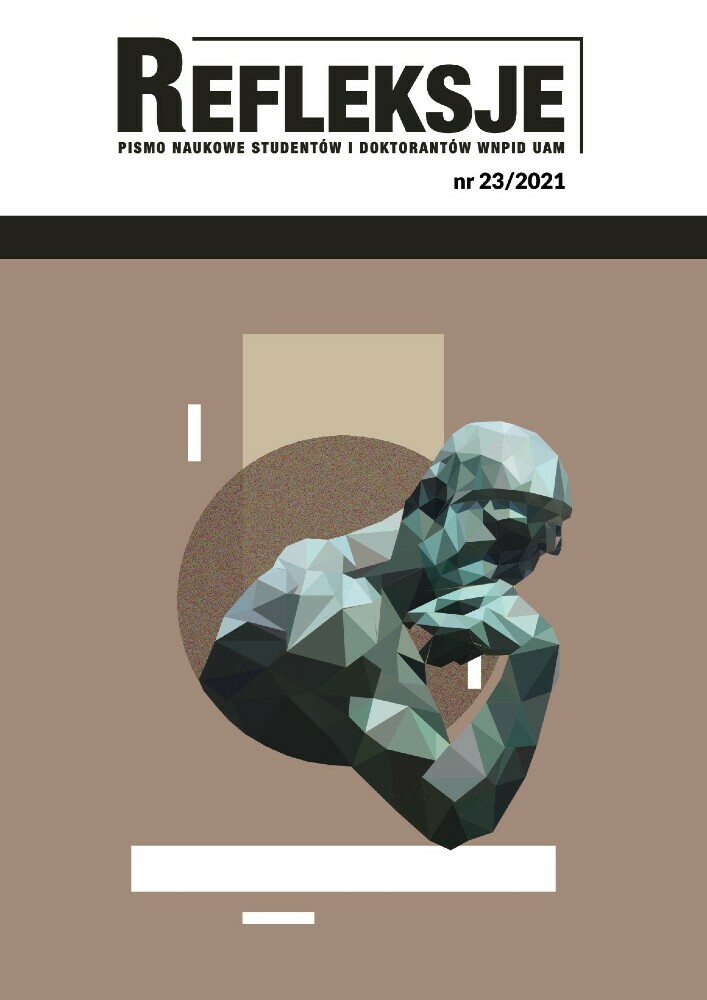Abstrakt
Tematem powyższego artykułu jest ocena obecnego stanu i istoty granicy Polsko-Ukraińskiej oraz następstw związanych z jej dzisiejszym kształtem. Głównym celem jest odpowiedź na pytanie jak znaczne na przestrzeni lat były przemiany w postrzeganiu relacji Polsko-Ukraińskich pośród przedstawicieli obydwu narodowości, uwzględniając rolę granicy Polsko-Ukraińskiej w tych przemianach. Badania przeprowadzone na potrzeby pracy, to dwie ankiety wypełniane przez Polaków i Ukraińców odpowiednio w języku polskim i rosyjskim. Użyte metody pozwalają zrozumieć w jakim stopniu polepszyły się relacje Polsko-Ukraińskie, szczególnie przez ostatnie kilka dekad.
Bibliografia
Bednarska O., Zniesienie wiz dla Ukraińców: zalety i tymczasowe trudności, biuletynmigracyjny.uw.edu.pl, http://www.biuletynmigracyjny.uw.edu.pl/57-czerwiec-2018/zniesienie-wiz-dla-ukraincow-zalety-i-tymczasowe-trudnosci-i-tymczasowe-trudnosci, 28.04.2020.
Białasiewicz L., O’Loughlin J. (2002), Re-ordering Europe’s Eastern Frontier: Galician Identities and Political Cartographies on the Polish-Ukrainian Border, Boulder, USA.
Draus J. (2011), Polish-Ukrainian relations after independence, “New Ukraine. A Journal of History and Politics”.
Felczak W. (1983), Historia Węgier, Warszawa.
Główny Urząd Statystyczny (2014), Border traffic and movement of goods and services at the European Union’s external border on the territory of Poland in 2013, Warszawa.
Janicki W. (2010), The influence of Polish-Ukrainian border on the socio-economic situation of selected communes, in: Selected aspects of transformation in countries of Central and Central-Eastern Europe, eds. T. Michalski, A. Kuczabski, University of Gdansk.
Kondek A. (2016), Od rzezi wołyńskiej do akcji Wisła. Konflikt polsko-ukraiński 1943–1947, dzieje.pl, 14.07.2016, https://dzieje.pl/wiadomosci/20-lat-temu-zmarl-wojciech-ziembinski, 26.04.2020.
Nestor the Chronicler (1968), Powieść minionych lat, translation: F. Sielicki, Wrocław.
Olszański T. (1993), Historia Ukrainy XX wieku, Warszawa.
Przez polski rynek pracy „przewija się” ok. 1,2 mln Ukraińców, businessinsider.com.pl, 11.03.2020 https://businessinsider.com.pl/wiadomosci/ukraincy-ilu-pracuje-w-polsce-dane-nbp/r1yf4pe, 27.08.2020.
Samsonowicz H. (1976), Historia Polski do roku 1795, Wydawnictwa Szkolne i Pedagogiczne, Warszawa.
Smętkowski M., Németh S., Eskelinen H. (2017), Cross-border shopping at the EU’s Eastern edge: the cases of Finnish-Russian and Polish-Ukrainian border regions, “Europa Regional”, 24.2016, pp. 50–64.
Stokłosa K. (2012), Neighborhood Relations on the Polish Borders: The Example of the Polish-German, Polish-Ukrainian and Polish-Russian Border Regions, “Journal of Borderlands Studies”, 27:3, pp. 245–255. DOI: https://doi.org/10.1080/08865655.2012.750948
Subtelny O. (1994), Ukraine: A History, University of Toronto press, p. 128.
Licencja
Prawa autorskie (c) 2021 Jakub Pacocha

Utwór dostępny jest na licencji Creative Commons Uznanie autorstwa 4.0 Międzynarodowe.

